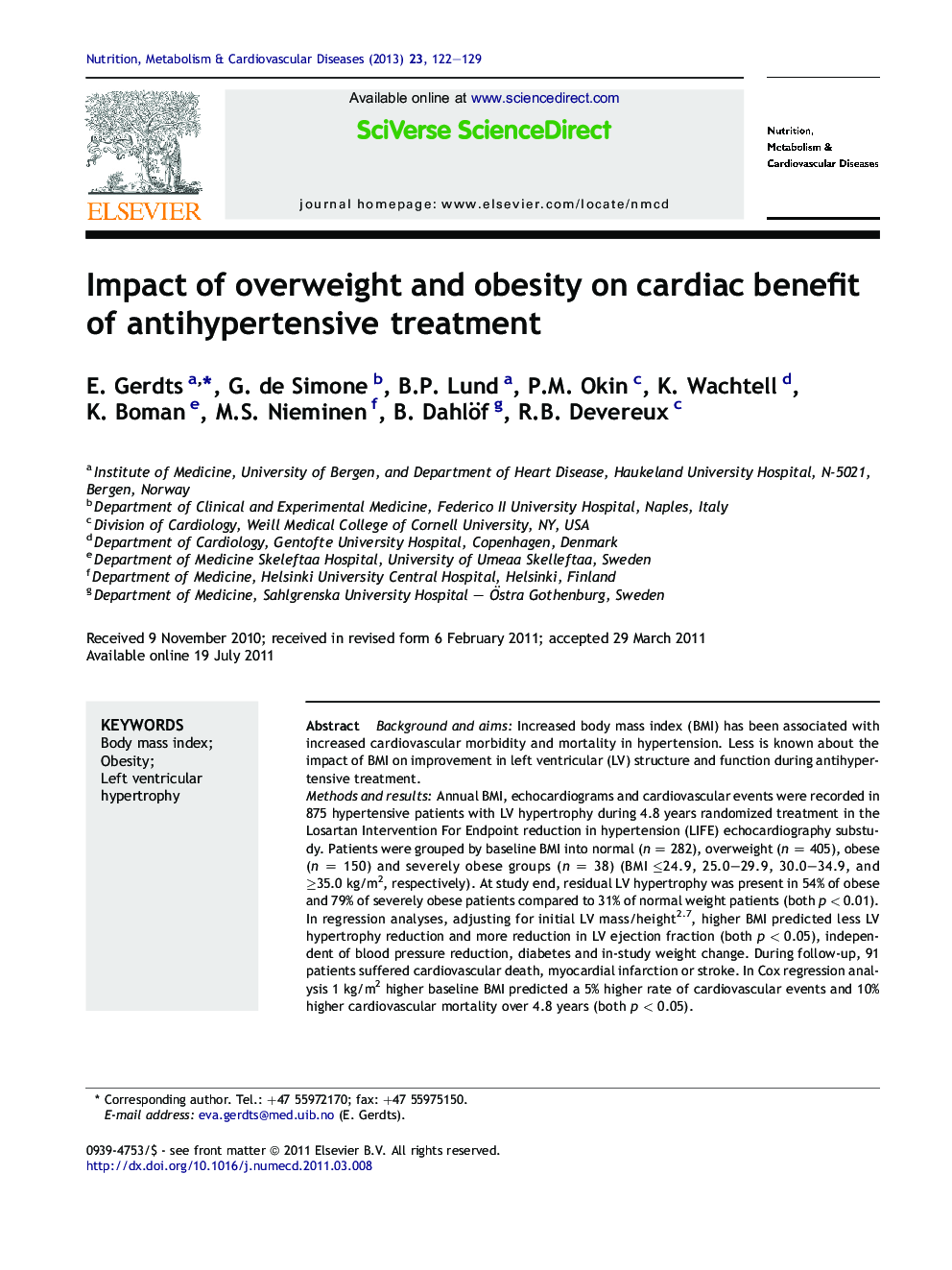| Article ID | Journal | Published Year | Pages | File Type |
|---|---|---|---|---|
| 3002028 | Nutrition, Metabolism and Cardiovascular Diseases | 2013 | 8 Pages |
Background and aimsIncreased body mass index (BMI) has been associated with increased cardiovascular morbidity and mortality in hypertension. Less is known about the impact of BMI on improvement in left ventricular (LV) structure and function during antihypertensive treatment.Methods and resultsAnnual BMI, echocardiograms and cardiovascular events were recorded in 875 hypertensive patients with LV hypertrophy during 4.8 years randomized treatment in the Losartan Intervention For Endpoint reduction in hypertension (LIFE) echocardiography substudy. Patients were grouped by baseline BMI into normal (n = 282), overweight (n = 405), obese (n = 150) and severely obese groups (n = 38) (BMI ≤24.9, 25.0–29.9, 30.0–34.9, and ≥35.0 kg/m2, respectively). At study end, residual LV hypertrophy was present in 54% of obese and 79% of severely obese patients compared to 31% of normal weight patients (both p < 0.01). In regression analyses, adjusting for initial LV mass/height2.7, higher BMI predicted less LV hypertrophy reduction and more reduction in LV ejection fraction (both p < 0.05), independent of blood pressure reduction, diabetes and in-study weight change. During follow-up, 91 patients suffered cardiovascular death, myocardial infarction or stroke. In Cox regression analysis 1 kg/m2 higher baseline BMI predicted a 5% higher rate of cardiovascular events and 10% higher cardiovascular mortality over 4.8 years (both p < 0.05).ConclusionsIn hypertensive patients in the LIFE study, increased BMI was associated with less reduction of LV hypertrophy and less improvement in LV systolic function which may contribute to the observed higher cardiovascular event rate of treated hypertensive patients.
